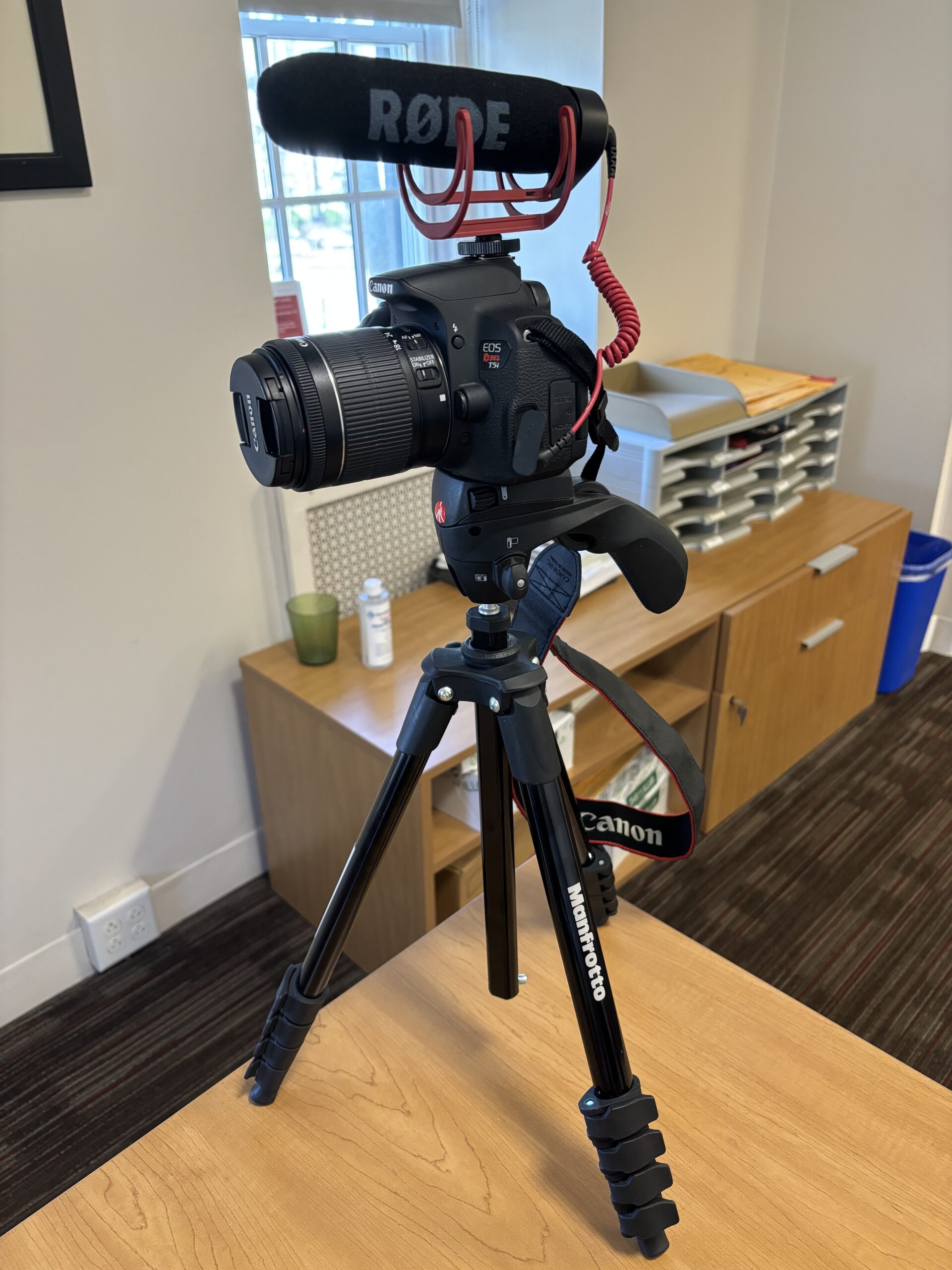Overview of Primary Technology Used
For my first consideration post, I would like to discuss my most important form of technology utilized for my capstone project. The Canon EOS Rebel T5i is the camera that I have been experimenting with and will continue to utilize throughout my filming process.
Not only is this camera and all of it’s attachments the most easily accessible (as it is offered through the SJU Gear Room) but it is also the camera that I am most familiar with. From past classes, I learned how to properly focus and stabilize the camera while perfecting high-quality audio on each video.
Needed Features
Every experienced photographer/videographer knows that the camera itself will only get you so far in producing the content you want. While the camera produces high quality videos with different features such as a stabilizer and different settings to adjust to lighting, focus, depth, etc. there are many other additional materials needed to generate intentional and professional-level content.
- The EFS 18-55mm zoom lens creates depth and focus to the video content while putting everything I want

Canon Camera, Rode Microphone, Manfrotto Tripod, Zoom Lens
to capture in the frame without any issues. Since I am recording a podcast with multiple people, this lens helps me to focus on one person at a time OR all of them in one frame. I plan on mastering the use of this zoom lens within the first few weeks of using it. I have already been experimenting with it the past few times I have recorded them and am startingto figure out where I want the cameras set up and how to focus the lens to have enough depth and detail around the focus of the video.
- The Rode microphone is an attachment onto the top of the camera that plugs directly into the Canon, creating professional-level audio attached to the video. It’s important for a project like this because producing high-quality video content with low-quality sound hinders it’s professionalism and makes for poor content. I plan to master this audio equipment the same way, by experimenting with it regularly and figuring out it’s placement to provide the most clear-sounding audio.
- The Manfrotto standing tripod is the final element of material needed in order to produce the best possible looking videos. It stabilizes the camera and assists in centering the subject at a flattering angle. Just like the other two, I plan to master this through experimenting and practicing to find the optimal positioning for the camera. All in all, I should perfect using all of these aiding materials in the upcoming weeks.
 How is This Technology Social?
How is This Technology Social?
The Canon is used as a social form of technology in multiple ways. Looking specifically to my capstone project, this technology first and foremost connects a much wider audience into a visual landscape that podcasts have just recently been introduced to. The average attention span for the targeted audience of my project is relatively low, but adding a visual connection to the audio landscape produced by the podcasters featured in my project will create a much wider audience and gain the attention of more people in our age bracket that consume media on a daily basis.
Another way this form of technology is social is in it’s inclusivity. Adding a video element to a podcast can mean so many different things, but I think what is incredibly beneficial in doing so it forging an inclusive environment to those who struggle with hearing. Being able to see and read captions on topics they love no longer hinders these hearing-impaired individuals.
Lastly, the Canon camera is social in the sense that there must always be a focus in front of the lens. Specific to my project, that focus is other people, sharing their opinions and feeling not only listened to but also appreciated. By filming them, not only am I capturing their appearances but also their personalities, their hand gestures, their body language. All of this is something that an audience would respond to and engage with. Humanizing the voices behind the podcast can be a very powerful thing, and I am happy to use the Canon alongside the other supplementing materials to do so.
Cultural Values
The cultural connections tied to using this technology, again as it specifically relates to my project, is in the fact that it engages audiences of all cultural backgrounds, ethnicities, races, sexes, etc. It also allows visual representation to the targeted audience to see the hosts of this podcast. As also mentioned previously, adding a visual component and media presence to this podcast allows inclusivity of hearing-impaired individuals.
How Will This Technology Afford My Actions?
This technology allows me to produce high-resolution videos that resemble professional grade videography and content. It is user-friendly, easy to understand, and versatile in options and settings. Once recorded, the SD card can easily be removed and put into my laptop to begin editing. All of these features are necessary for my project’s final deliverables and are key components of the Canon’s features.
Constraints
This technology, however, may constrain my actions in a few user-error ways. For starters, the battery life is relatively short and will have to have fully charged batteries each time I want to film any content. Also, there are no audible warnings or alerts if the SD card storage is full, meaning I will have to upload any and all filmed content right after I am done. Lastly, I have noticed that since I am filming for long periods of time, the camera “assumes” that I simply forgot to stop recording and turn it off, so some of my videos have gotten cut off in the middle of filming. All of these constraints are manageable however, and I will be, and have been, adapting accordingly to them.
February 27, 2024 at 2:02 pm
Wonderful post, Amanda! Next time enhance your post with links and a lead. -Bill